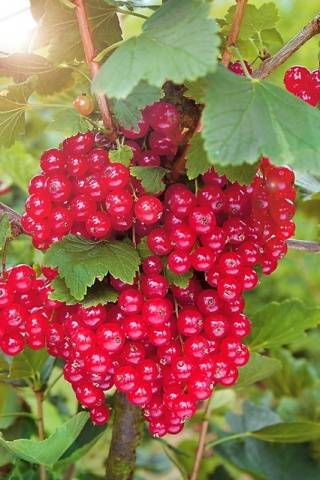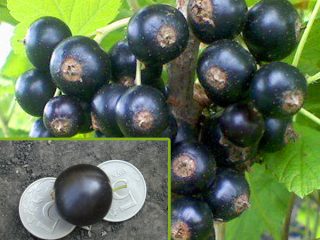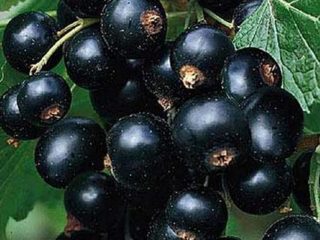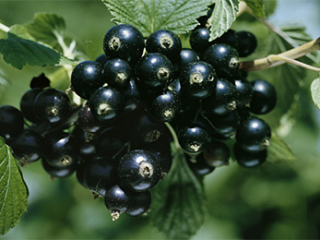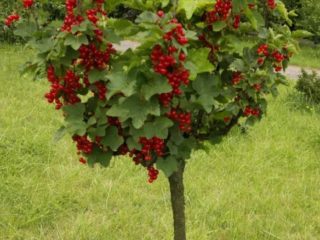Content
Ural beauty is an unpretentious variety of red currant. It is valued for its frost resistance, ease of care, and ability to tolerate drought. The berries have universal uses. When choosing the right place for planting, the bushes bring a stable high yield.
Botanical description
The Ural Beauty variety was bred in the Southern Urals. Red currant tolerates the conditions of the middle zone, the Urals and Siberia well.
Description of the red currant variety Ural Beauty:
- fruiting in medium terms;
- medium-sized, slightly spreading plant;
- thin curved shoots;
- large leaves of rich green color;
- wrinkled concave leaves;
- long fruit clusters.
Characteristics of berries of the Ural Beauty variety:
- round shape;
- sweet and sour taste;
- average weight 0.9 g;
- dining purpose.
Currant berries are used fresh. In home canning, jams, jams, and compotes are made from berries. The berries are frozen for the winter, added to smoothies, vitamin cocktails, and pie fillings.
Planting red currants
The Ural Beauty variety is unpretentious to the place of cultivation. To obtain a stable harvest, it is better to provide the plants with good lighting.Healthy seedlings are selected for planting. Planting holes are first prepared for currants, where organic matter and minerals are added.
Preparing the site and seedlings
Currants are planted in areas that are constantly illuminated by the sun throughout the day. It is best to choose a place on the slopes where the plants are protected from the cold wind. Low-lying areas are not suitable for planting because moisture and cold air masses accumulate in them.
Keep 3 m away from fences and buildings so that the currants do not end up in the shade. You should also place the bushes away from fruit trees, which take nutrients from the soil.
Choose strong currant seedlings 30 cm long and with healthy roots. The day before planting, remove all leaves and soak the roots in clean water for a day.
Work order
Red currants are planted in September. Before winter sets in, the plant will have time to take root. If it is not possible to complete the work in the fall, then it will be postponed to April. Then it is recommended to prepare the planting hole in the fall.
Sequence of work for planting red currants:
- A month before planting, dig a hole measuring 40x40 cm and 50 cm deep. Maintain a distance of 1.5 m between bushes.
- Add 2 buckets of compost and 3 liters of wood ash to the fertile soil.
- Pour part of the prepared soil mixture into the hole. Wait for the soil to settle, which usually takes 2-4 weeks.
- Fill the hole with the remaining soil. Place the seedling on top and cover its roots with soil.
- Compact the soil and cut the shoots to 20 cm. Leave 2-3 buds on the shoots.
- Pour 3 liters of warm water under the bush.
After planting, water young plants every 4 days. To keep the soil moist longer, mulch it with humus.
Care
According to the description, the Ural beauty red currant requires minimal care. It is enough to regularly water and feed the bushes. To preserve the harvest and the plants themselves, preventive treatments are periodically carried out. This way, plantings are protected from pest invasion and the spread of diseases.
Watering
The Ural Beauty variety is able to withstand short-term drought and lack of moisture. However, a long absence of watering retards the development of the bush. If drought occurs during the period of formation of ovaries and berries, then lack of moisture leads to loss of harvest. Stagnant moisture is also detrimental to currants. Arranging a drainage layer during planting helps to avoid it.
Under each bush, add 10-15 liters of warm, settled water. First, at a distance of 30 cm from the currant, a circular furrow is made, where moisture is added. The soil should be wet by 30 cm.
After adding moisture, loosen the soil and weed it from weed. As a result, the absorption of moisture and nutrients by plants improves. To reduce the number of waterings, the soil is mulched with decomposed manure or peat.
In autumn, the last abundant watering is carried out. Its purpose is to protect plantings from winter frosts. Moistened soil does not freeze deeply.
Feeding
Fertilizer application activates the growth of red currant Ural beauty, increases its immunity to disease and increases productivity. Fertilizing begins in the spring, when the snow melts and the growing season begins.
After winter, plants need nitrogen, which promotes the growth of green mass. In April, 15 g of urea is added to the soil. In June, the bushes are fed with organic matter. For 10 liters of water, 0.6 liters of mullein is required. The resulting solution is poured under the root.
In cool weather, foliar treatments are more effective. The bushes are sprayed with a solution consisting of 5 liters of water, 2 g of boric acid and 1 g of zinc sulfate. Processing by leaf increases the number of ovaries. A cloudy day is chosen for the procedure.
After fruiting, plants need to regain their strength. When digging the soil under the bushes, add compost and wood ash. From mineral substances, you can add 50 g of superphosphate and 40 g of potassium sulfate.
Trimming
Regular red currant pruning Ural beauty ensures stable fruiting of the crop. Treatment is carried out in late autumn or early spring, when the growing season has already ended or has not yet begun.
The formation of berries occurs at the tops of the shoots. Therefore, the main fruit-bearing branches are not shortened. Old shoots that bear fruit for more than 7 years are subject to pruning.
Be sure to remove broken, diseased, dry and frozen branches. The yield of currants largely depends on good lighting. A bush with a large number of shoots brings a small harvest, so it needs to be thinned out. A total of 15 branches are left per bush.
Protection from diseases and pests
Red currant Ural beauty is characterized by average resistance to diseases. With constant care, the risk of developing diseases is minimized.
For preventive purposes, plants are treated with special means. Before the buds open, they are sprayed with a solution of the drug Fundazol. 3 weeks after picking the berries, the treatment is repeated.
Currants attract aphids, gall midges, spider mites and other pests. When buds form, the bushes are sprayed with insecticides Karbofos or Actellik. In autumn, plants need additional treatment.
Currant propagation
If you have a red currant bush Ural beauty, you can get new plants yourself. The easiest way to get new seedlings is through layering.
To do this, take a healthy shoot and lower it into a pre-dug ditch. The branch is secured with metal hooks and covered with earth. Every week the cuttings are spudded and watered. In autumn, currants are separated from the original bush and planted in a new place.
New red currant bushes are obtained by rooting cuttings. Annual shoots 20 cm high are separated from the bush. They are planted in a box filled with wet sand and kept at a temperature of +1 °C. After 4 months, the cuttings are put into the refrigerator or cellar until spring. When the snow melts, begin planting currants.
If there is a need to replant currants, the rhizome is divided into parts to obtain new seedlings. Currants are dug up and the rhizome is divided with a sharp knife. The sections are treated with crushed coal. The resulting bushes are planted around the site.
Reviews from gardeners
Conclusion
Ural beauty currant is an unpretentious variety that produces high yields even in regions with an unfavorable climate. Seedlings are obtained independently or purchased from nurseries. For propagation, currant rhizomes, cuttings or layering are used. The bushes are provided with care, which consists of watering, fertilizing and pruning. Special preparations are used against diseases and pests.


